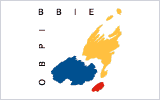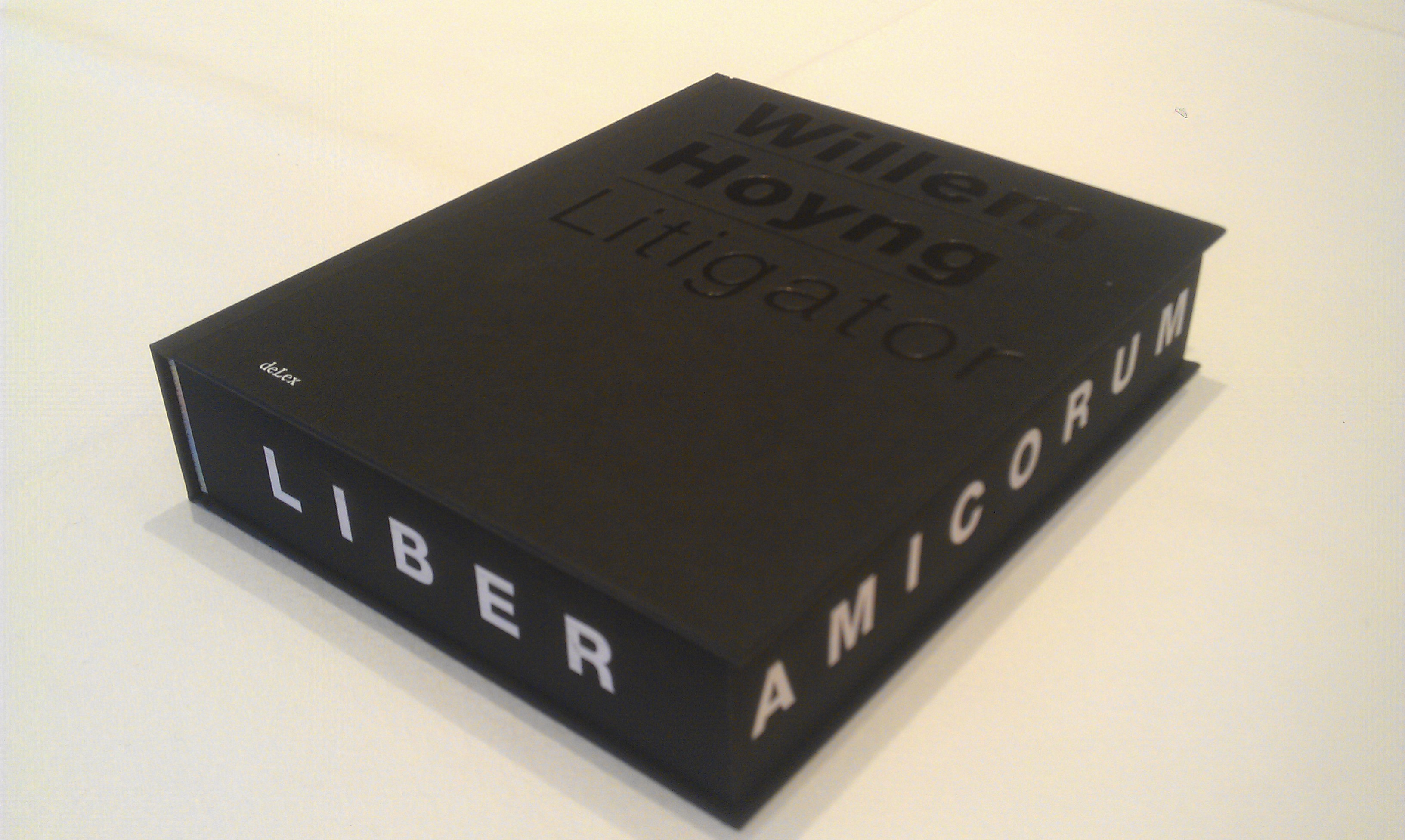Mededeling inzake classificatie: onvoldoende duidelijke en nauwkeurige termen in klasse-titels (zgn class-headings)
 In een eerdere Mededeling d.d. 22 augustus 2012 is reeds aandacht besteed aan enkele praktische gevolgen van het IP Translator arrest (C-307/10). Het Hof van Justitie van de Europese Unie heeft in deze zaak onder meer geoordeeld (tweede punt van het dictum):
In een eerdere Mededeling d.d. 22 augustus 2012 is reeds aandacht besteed aan enkele praktische gevolgen van het IP Translator arrest (C-307/10). Het Hof van Justitie van de Europese Unie heeft in deze zaak onder meer geoordeeld (tweede punt van het dictum):
“Richtlijn 2008/95 moet aldus worden uitgelegd dat zij niet in de weg staat aan het gebruik van de algemene benamingen van de hoofdklassen van de classificatie bedoeld in artikel 1 van de Overeenkomst van Nice betreffende de internationale classificatie van de waren en diensten voor de inschrijving van merken, die door de diplomatieke conferentie van Nice is aangenomen op 15 juni 1957, laatstelijk herzien te Genève op 13 mei 1977 en gewijzigd op 28 september 1979, voor de omschrijving van de waren en diensten waarvoor de merkbescherming wordt gevraagd, voor zover een dergelijke omschrijving voldoende duidelijk en nauwkeurig is.”
In de eerdere Mededeling is hierover opgemerkt:
“5. Voor de algemene benamingen van de class-headings geldt dat deze kunnen worden gebruikt, maar alleen wanneer zij voldoende duidelijk en nauwkeurig zijn voor de omschrijving van de waren en diensten waarvoor de merkbescherming wordt gevraagd. Indien dit niet het geval is, dient een specificatie te worden aangebracht.
6. Hierbij dient te worden benadrukt dat de verantwoordelijkheid voor een correcte omschrijving van waren en diensten te allen tijde bij de merkhouder zelf ligt.
7. Het BBIE streeft naar samenwerking met het Bureau voor harmonisatie binnen de interne markt (BHIM), nationale bureaus en gebruikersorganisaties in Europa, zulks in het kader van het zgn. “convergentieprogramma”: een door BHIM geïnitieerd programma om binnen de Europese Unie de praktijken zoveel mogelijk op elkaar af te stemmen. In dit verband wordt momenteel gewerkt aan een gestructureerde lijst van waren en diensten voor classificatiedoeleinden.”
Deze samenwerking in het convergentieprogramma heeft geresulteerd in een Gemeenschappelijke Verklaring, die vandaag door het BHIM en alle deelnemende bureaus is gepubliceerd. Hierin worden elf termen uit de klasse-titels (class-headings) genoemd die naar oordeel van de deelnemende bureaus onvoldoende duidelijk en nauwkeurig zijn.
Gevolgen voor bestaande inschrijvingen en nieuwe depots
De verantwoordelijkheid voor een correcte omschrijving van waren en diensten ligt, zoals reeds in de eerdere Mededeling vermeld, te allen tijde bij de merkhouder zelf. Het is aan de merkhouder om de omvang te bepalen van de bescherming die door hem geclaimd wordt en daarbij bewoordingen te gebruiken die voldoende duidelijk en nauwkeurig zijn.
Houders van bestaande inschrijvingen kunnen deze beperken. Indien een inschrijving termen bevat die onvoldoende duidelijk en nauwkeurig zijn zal het BBIE een beperking tot waren of diensten die in dezelfde klasse worden gerangschikt en onder de natuurlijke en normale betekenis van deze term kunnen vallen toestaan.
Voor nieuwe Beneluxdepots geldt dat de classificatietool in de e-filingapplicatie (BOIP online filing) zo zal worden ingericht dat de deposant erop wordt gewezen dat de elf betreffende termen nader gespecificeerd moeten worden. Een ander hulpmiddel voor classificatie is de TMclass database waarin een binnen het kader van het convergentieprogramma ontwikkelde taxonomiestructuur is opgenomen: https://tmclass.tmdn.org. Het gebruik van deze tools is zeer aan te bevelen. Wanneer het BBIE desondanks signaleert dat een indiener termen gebruikt die onvoldoende duidelijk en nauwkeurig zijn, zal het hem daarop wijzen en uitnodigen om deze te verduidelijken.
Gevolgen voor inter partes procedures (opposities)
In opposities zal het BBIE als stelregel hanteren dat de consequenties van het onvoldoende duidelijk en nauwkeurig zijn van een omschrijving voor rekening komen van de partij die zich ervan bedient. In geval van een oppositie waarbij de ene partij vage termen inroept en de andere partij termen die voldoende duidelijk en nauwkeurig zijn, zal het BBIE dus beslissen ten voordele van de laatste.
Overigens zullen dergelijke situaties zich in praktijk steeds minder kunnen voordoen aangezien vage termen niet door het BBIE zullen worden geaccepteerd bij nieuwe depots.
Ook in inter partes procedures geldt uiteraard dat partijen de verantwoordelijkheid dragen voor hun doen of nalaten. Het is dus aan partijen om in voorkomend geval het initiatief te nemen om de opgave van waren of diensten van hun inschrijving of depot te beperken. Het BBIE zal hen hier niet actief toe uitnodigen. Dit zou immers op gespannen voet staan met de rol die het BBIE als beslissende instantie in procedures tussen partijen behoort te vervullen en het beginsel dat partijen de omvang van het geschil en de middelen bepalen.
 This Liber Amicorum is offered to Willem Hoyng in celebration of his 40th anniversary as an IP lawyer and his 25th anniversary as a Professor op IP at Tilburg University. Over the years, Willem has made a very substantial contribution to the field of national and international intellectual property. This book is an homage to him, and a reminder of some of the highlights of his work over the years. The articles collected here discuss a variety of cases that Willem dealt with before the Supreme Court of The Netherlands, the Benelux Court of Justice and the European Court of Justice. The authors of the contributions are all international IP specialists. They include key members of the intellectual property judiciary and illustrious collaegues, past and present.
This Liber Amicorum is offered to Willem Hoyng in celebration of his 40th anniversary as an IP lawyer and his 25th anniversary as a Professor op IP at Tilburg University. Over the years, Willem has made a very substantial contribution to the field of national and international intellectual property. This book is an homage to him, and a reminder of some of the highlights of his work over the years. The articles collected here discuss a variety of cases that Willem dealt with before the Supreme Court of The Netherlands, the Benelux Court of Justice and the European Court of Justice. The authors of the contributions are all international IP specialists. They include key members of the intellectual property judiciary and illustrious collaegues, past and present.
 Via IViR.nl:The internet has proven a convenient vehicle for the commission of unprecedented levels of copyright infringement by leagues of anonymous – and impecunious – infringers. In their quest for deep pockets and easy targets, right-holders have, in reaction, turned against the internet middlemen, attempting to hold them accountable for the wrong-doings of the small-scale offenders using their networks. As a result, the tricky issue of indirect liability has been given new urgency. With perplexed domestic courts turning to the general rules on extra-contractual liability to parse the issue, during the 90s a number of EU Member States started introducing special liability laws in order to shield the budding internet industry from legal uncertainty. (...)
Via IViR.nl:The internet has proven a convenient vehicle for the commission of unprecedented levels of copyright infringement by leagues of anonymous – and impecunious – infringers. In their quest for deep pockets and easy targets, right-holders have, in reaction, turned against the internet middlemen, attempting to hold them accountable for the wrong-doings of the small-scale offenders using their networks. As a result, the tricky issue of indirect liability has been given new urgency. With perplexed domestic courts turning to the general rules on extra-contractual liability to parse the issue, during the 90s a number of EU Member States started introducing special liability laws in order to shield the budding internet industry from legal uncertainty. (...) Uit de Executive Summary: The exclusive right of “making available” under the WCT and the implementing EU legislation covers the offering to the public of a work for individualized streaming or downloading; in addition, where it takes place, the actual transmission of a work to members of the public also is covered, both irrespective of the technical means used for making available. In essence, what matters is that the act (i) is performed by an individual person (ii) directly or indirectly has the distinct effect of addressing the public, irrespective of the tool used by the individual, and (iii) concerns subject matter protected by copyright or related rights.
Uit de Executive Summary: The exclusive right of “making available” under the WCT and the implementing EU legislation covers the offering to the public of a work for individualized streaming or downloading; in addition, where it takes place, the actual transmission of a work to members of the public also is covered, both irrespective of the technical means used for making available. In essence, what matters is that the act (i) is performed by an individual person (ii) directly or indirectly has the distinct effect of addressing the public, irrespective of the tool used by the individual, and (iii) concerns subject matter protected by copyright or related rights. This 1 200-page book on the case law of the EPO boards of appeal provides a wealth of useful information for everyone concerned with European patent law. The revised and expanded seventh edition was published in September 2013.
This 1 200-page book on the case law of the EPO boards of appeal provides a wealth of useful information for everyone concerned with European patent law. The revised and expanded seventh edition was published in September 2013. Bijdrage ingezonden door Joran Spauwen,
Bijdrage ingezonden door Joran Spauwen,  Douane. Beslag. Namaak (‘counterfeiting’) en productpiraterij plegen voor de civiele rechter – en in extreme gevallen ook strafrechtelijk – bestreden te worden. Minder bekend maar zeker niet minder belangrijk is de rol van de douane bij de namaak- en piraterijbestrijding. Op grond van de zogeheten Anti-Piraterij Verordening (Verordening 608/2013 van 12 juni 2013, die in de plaats is gekomen van
Douane. Beslag. Namaak (‘counterfeiting’) en productpiraterij plegen voor de civiele rechter – en in extreme gevallen ook strafrechtelijk – bestreden te worden. Minder bekend maar zeker niet minder belangrijk is de rol van de douane bij de namaak- en piraterijbestrijding. Op grond van de zogeheten Anti-Piraterij Verordening (Verordening 608/2013 van 12 juni 2013, die in de plaats is gekomen van 




















